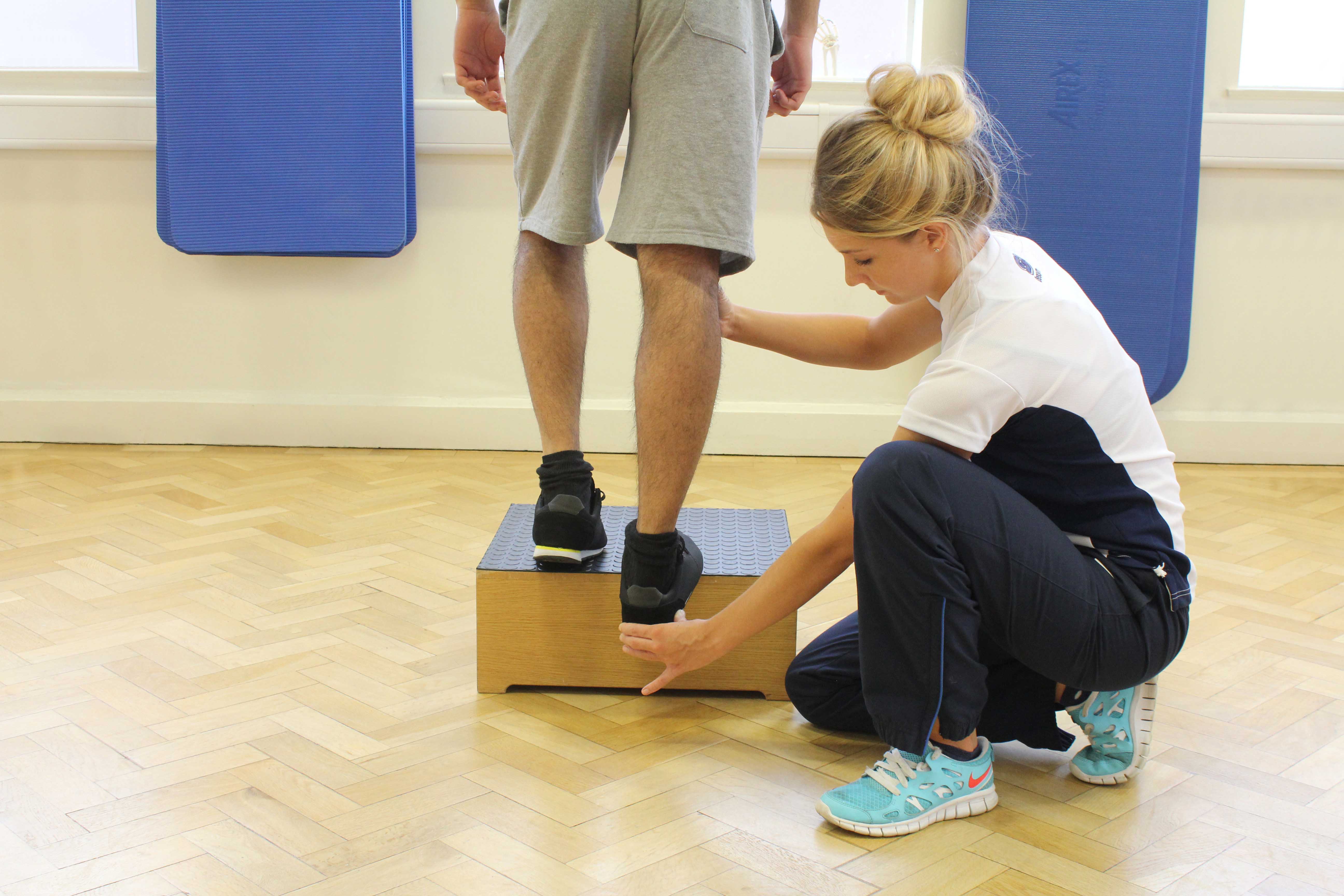Sinus Tarsi Syndrom | The article deals with description of development of different forms of bradycarias with special attention paid to sick sinus syndrome (sss). The entire space is filled with fat, five ligaments and vessels. = knöcherner tunnel innerhalb des. The sinus tarsi syndrome was first described in the medical literature in 1958.1 overall incidence is unknown, but it is generally considered uncommon and without consistent gender predilection.2,3. Clinical manifestations of sss are described, therapy methods including implanting of electric cardiostimulator.
Learn more on this topic. Sinus node dysfunction in children. = knöcherner tunnel innerhalb des. When treated early, recovery from sinus tarsi. The entire space is filled with fat, five ligaments and vessels.

The sinus tarsi is a small bony tube, which inserts into the ankle beneath the talus bone. Components of the sinus tarsi syndrome include lateral hindfoot pain, tenderness to palpation over. The article deals with description of development of different forms of bradycarias with special attention paid to sick sinus syndrome (sss). Sinus node dysfunction in children. Sinus tarsi syndrome has been described in dancers, volleyball and basketball players, overweight individuals, and patients with flatfoot and hyperpronation deformities. The sinus tarsi can be injured or damaged due to overuse along with over pronation or bad foot biomechanics. Clinical manifestations of sss are described, therapy methods including implanting of electric cardiostimulator. The incidence of sinus tarsi syndrome is unknown, but it has been associated with ankle sprains that may also result in talocrural. Causes of sinus tarsi syndrome. = knöcherner tunnel innerhalb des. Contributed by richard bouché, d.p.m., past president aapsm. What is sinus tarsi syndrome ? The sinus tarsi syndrome was first described in the medical literature in 1958.1 overall incidence is unknown, but it is generally considered uncommon and without consistent gender predilection.2,3.
= knöcherner tunnel innerhalb des. The entire space is filled with fat, five ligaments and vessels. The sinus tarsi is a small bony tube, which inserts into the ankle beneath the talus bone. The sinus tarsi is an anatomic space between the inferior aspect of the talus and the superior aspect of the calcaneus, anterior to the posterior subtalar joint. Clinical disorder characterized by specific symptoms and signs localized to the sinus tarsi (known as the eye of the foot), which refers to an opening on the outside of the foot between the ankle and heel bone.

Learn more on this topic. When treated early, recovery from sinus tarsi. Clinical disorder characterized by specific symptoms and signs localized to the sinus tarsi (known as the eye of the foot), which refers to an opening on the outside of the foot between the ankle and heel bone. Sinus node dysfunction (snd), also known as sick sinus syndrome (sss), is a group of abnormal heart rhythms (arrhythmias) usually caused by a malfunction of the sinus node, the heart's primary pacemaker. The article deals with description of development of different forms of bradycarias with special attention paid to sick sinus syndrome (sss). The sinus tarsi syndrome was first described in the medical literature in 1958.1 overall incidence is unknown, but it is generally considered uncommon and without consistent gender predilection.2,3. Sinus node dysfunction in children. The sinus tarsi is an anatomic space between the inferior aspect of the talus and the superior aspect of the calcaneus, anterior to the posterior subtalar joint. Also known as sinus tarsitis, it causes persistent pain and tenderness over the outside of the ankle due to inflammation. Progress in understanding and management/ richard sutton// glob cardiol sci pract. Sinus node dysfunction in children. Components of the sinus tarsi syndrome include lateral hindfoot pain, tenderness to palpation over. The sinus tarsi is a small bony tube, which inserts into the ankle beneath the talus bone.
The sinus tarsi can be injured or damaged due to overuse along with over pronation or bad foot biomechanics. Sinus tarsi syndrome has been described in dancers, volleyball and basketball players, overweight individuals, and patients with flatfoot and hyperpronation deformities. Learn more on this topic. Sinus tarsi syndrome usually develops following an ankle sprain or due to repetitive strain from running or walking on a flat foot. Contributed by richard bouché, d.p.m., past president aapsm.

Causes of sinus tarsi syndrome. When treated early, recovery from sinus tarsi. The entire space is filled with fat, five ligaments and vessels. The sinus tarsi is an anatomic space between the inferior aspect of the talus and the superior aspect of the calcaneus, anterior to the posterior subtalar joint. The article deals with description of development of different forms of bradycarias with special attention paid to sick sinus syndrome (sss). Sinus tarsi syndrome has been described in dancers, volleyball and basketball players, overweight individuals, and patients with flatfoot and hyperpronation deformities. Sinus tarsi syndrome usually develops following an ankle sprain or due to repetitive strain from running or walking on a flat foot. The sinus tarsi can be injured or damaged due to overuse along with over pronation or bad foot biomechanics. Sinus node dysfunction in children. Clinical disorder characterized by specific symptoms and signs localized to the sinus tarsi (known as the eye of the foot), which refers to an opening on the outside of the foot between the ankle and heel bone. Also known as sinus tarsitis, it causes persistent pain and tenderness over the outside of the ankle due to inflammation. Sinus node dysfunction in children. Sinus node dysfunction (snd), also known as sick sinus syndrome (sss), is a group of abnormal heart rhythms (arrhythmias) usually caused by a malfunction of the sinus node, the heart's primary pacemaker.
Sinus Tarsi Syndrom: Sinus node dysfunction in children.
Referanse: Sinus Tarsi Syndrom
Tidak ada komentar:
Posting Komentar